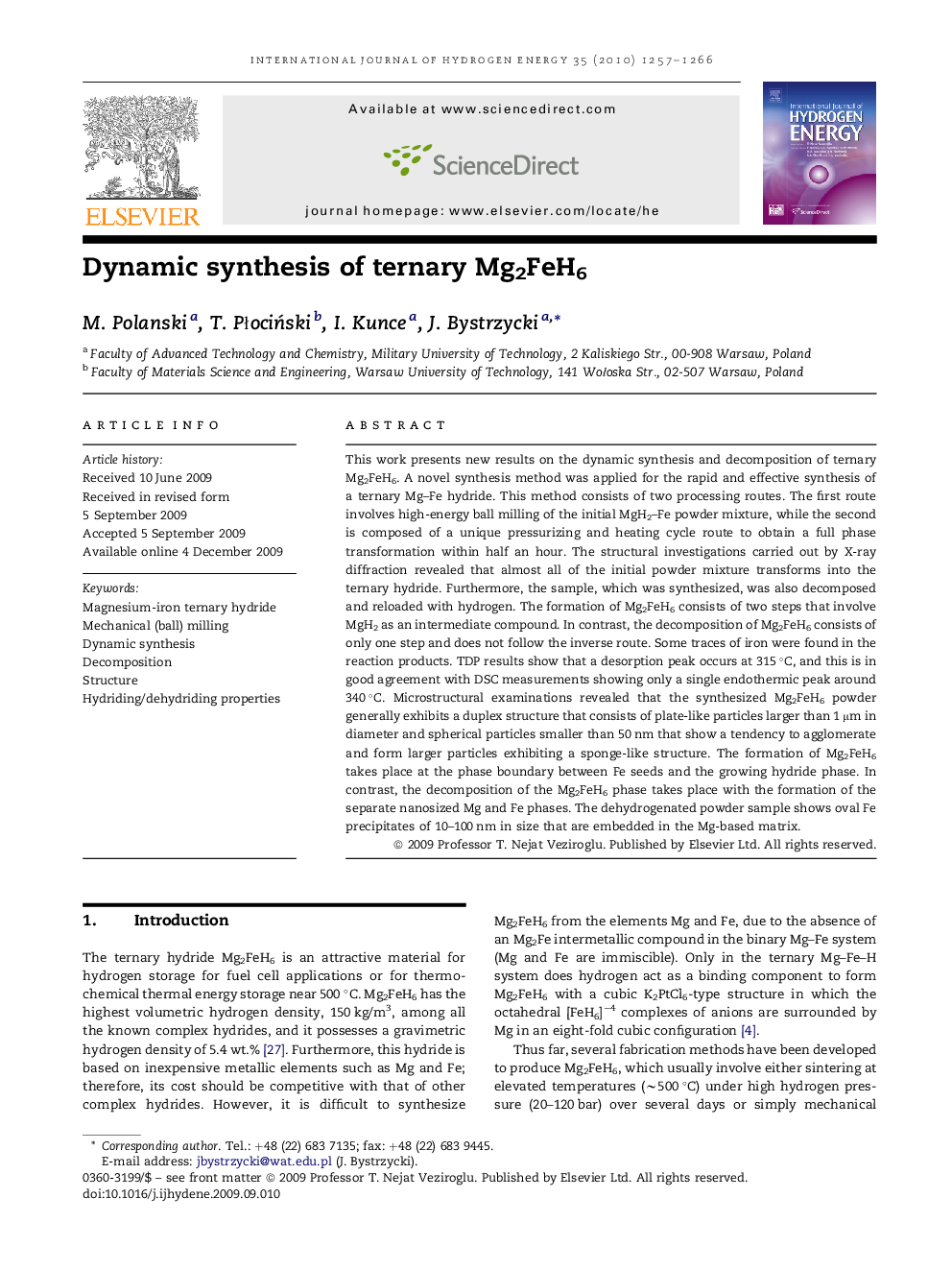| Article ID | Journal | Published Year | Pages | File Type |
|---|---|---|---|---|
| 1273518 | International Journal of Hydrogen Energy | 2010 | 10 Pages |
This work presents new results on the dynamic synthesis and decomposition of ternary Mg2FeH6. A novel synthesis method was applied for the rapid and effective synthesis of a ternary Mg–Fe hydride. This method consists of two processing routes. The first route involves high-energy ball milling of the initial MgH2–Fe powder mixture, while the second is composed of a unique pressurizing and heating cycle route to obtain a full phase transformation within half an hour. The structural investigations carried out by X-ray diffraction revealed that almost all of the initial powder mixture transforms into the ternary hydride. Furthermore, the sample, which was synthesized, was also decomposed and reloaded with hydrogen. The formation of Mg2FeH6 consists of two steps that involve MgH2 as an intermediate compound. In contrast, the decomposition of Mg2FeH6 consists of only one step and does not follow the inverse route. Some traces of iron were found in the reaction products. TDP results show that a desorption peak occurs at 315 °C, and this is in good agreement with DSC measurements showing only a single endothermic peak around 340 °C. Microstructural examinations revealed that the synthesized Mg2FeH6 powder generally exhibits a duplex structure that consists of plate-like particles larger than 1 μm in diameter and spherical particles smaller than 50 nm that show a tendency to agglomerate and form larger particles exhibiting a sponge-like structure. The formation of Mg2FeH6 takes place at the phase boundary between Fe seeds and the growing hydride phase. In contrast, the decomposition of the Mg2FeH6 phase takes place with the formation of the separate nanosized Mg and Fe phases. The dehydrogenated powder sample shows oval Fe precipitates of 10–100 nm in size that are embedded in the Mg-based matrix.
